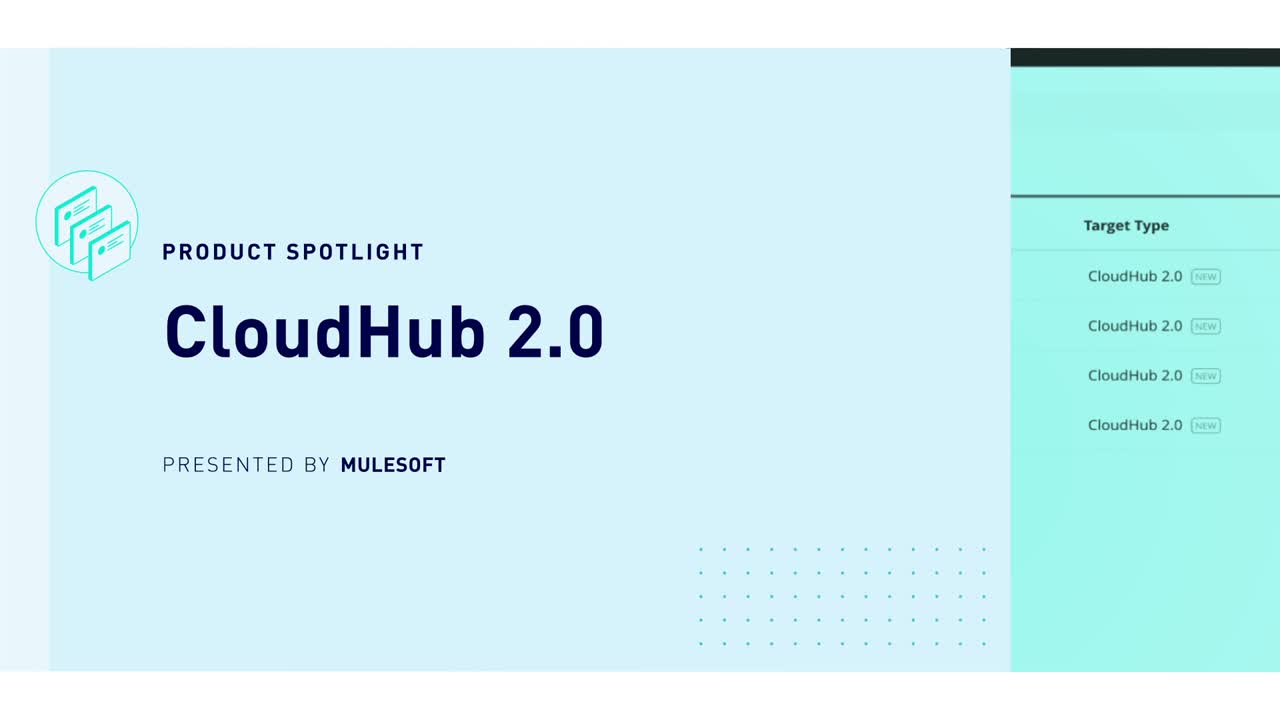We are excited to announce CloudHub 2.0, a simplified experience to deploy and run MuleSoft applications in the cloud. CloudHub 2.0 is a fully managed, containerized managed cloud service, where you can deploy and run MuleSoft applications.
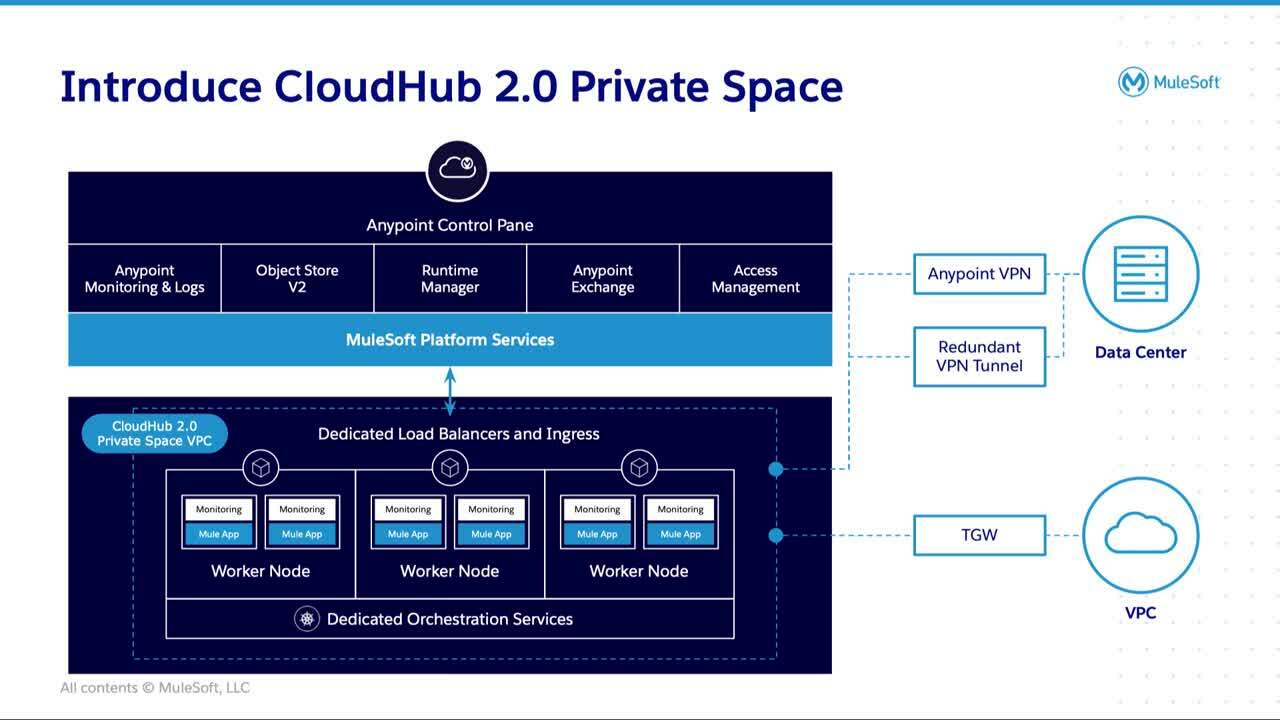
MuleSoft CloudHub 2.0
At MuleSoft CONNECT 2022, we announced CloudHub 2.0. This new release builds on the success of the existing CloudHub infrastructure by bringing a brand new deployment experience and containerized architecture based on Kubernetes. With this update, users can quickly deploy their integrations, APIs, and automations to a resilient and scalable environment. Today, we are thrilled to announce the general availability of CloudHub 2.0.

Why CloudHub 2.0?
We’ve outlined four core elements of CloudHub 2.0 and what improvements we’ve made with this launch:
- Get started quickly
- Leverage lightweight container-based isolation
- Streamline operations
- Implement tighter security controls
Get started quickly
Customers often have complex compliance regulations that require them to deploy applications to an isolated network. The release of CloudHub 2.0 provides the concept of a Private Space, which encapsulates the configuration for secure connectivity from MuleSoft to on-prem or other cloud environments.
The intuitive user interface provides a simplified way to configure VPCs, Load Balancers, and Traffic routing rules all in one place thereby reducing the setup time. Alternatively, applications that do not need strict compliance requirements can also be quickly deployed in a Shared Space.
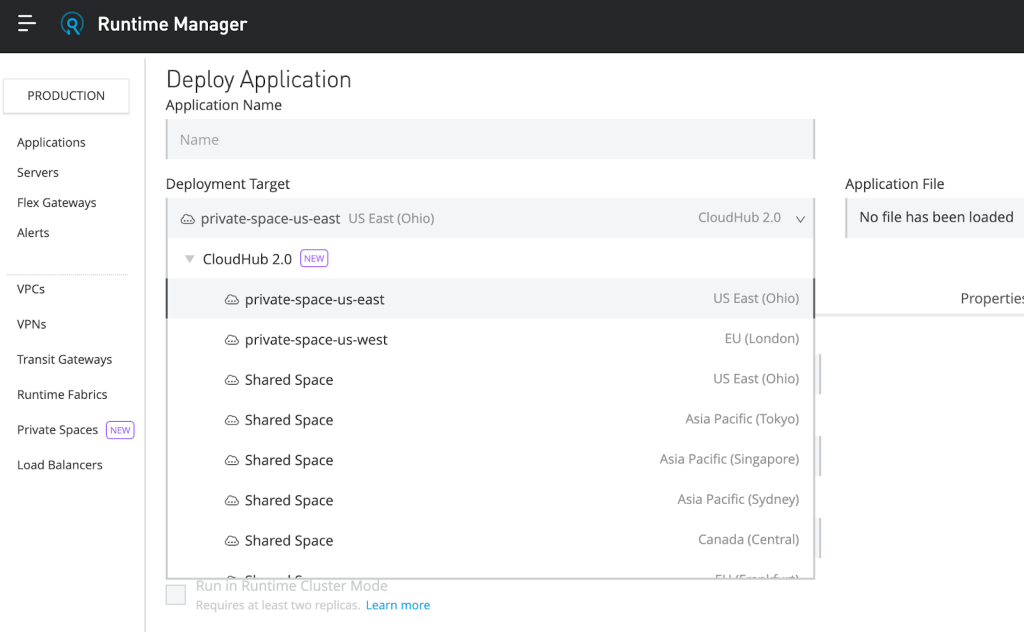
Leverage lightweight container-based isolation
With a Kubernetes-based architecture, every single application is deployed as a lightweight container that can scale up and down easily. Replicas of the same application are deployed across different availability zones providing redundancy and reliability. The UI-driven workflow abstracts out the Kubernetes packaging and deployment aspects thereby reducing time and cost.
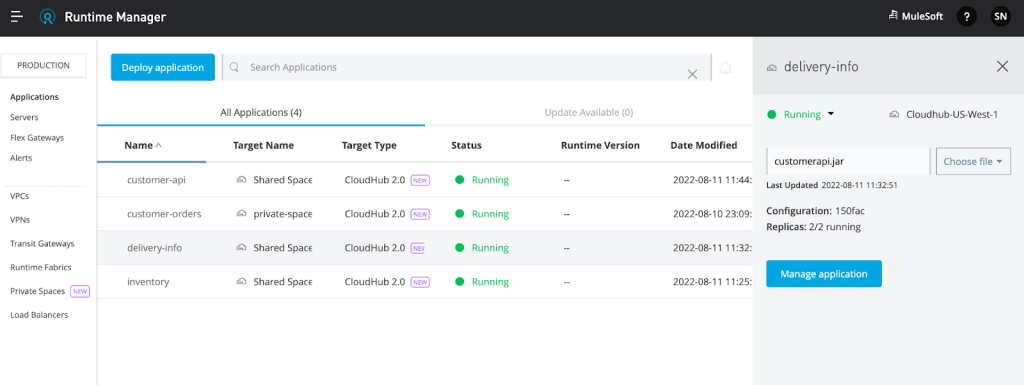
Streamline operations
We now have a built-in ingress load balancer with auto-scaling capabilities for each Private Space. This reduces the management overhead of having to configure and manage Dedicated Load Balancers. The updated Runtime Manager experience provides the ability to manage applications deployed to Shared or Private Spaces in one single view.

Implement tighter security controls
In an effort to improve traffic controls, the new release provides simplified static IP management with outbound NATing and finer egress control with the ability to define egress firewall rules at the Private Space level. This allows the configuration for the outbound traffic based on destination and address.
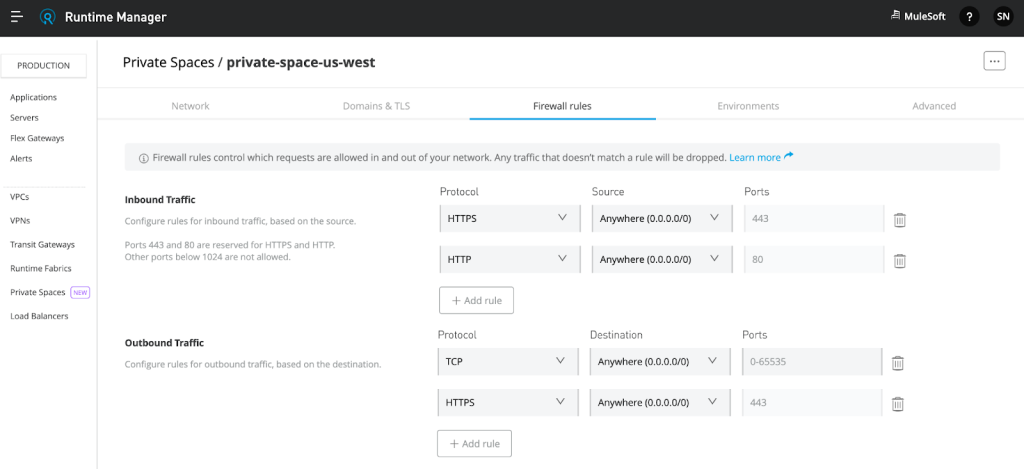
Benefits of MuleSoft CloudHub 2.0
- Supports runtime deployments globally across 12 regions
- Dynamically scales infrastructure and built-in services up or down to support elastic transaction volume
- Provides a standardized, lightweight isolation boundary by running each Mule instance and service as a separate container
- Contains built-in security policies that protect services and sensitive data with encrypted secrets, firewall controls, and restricted shell access
- Made with future-proofed architecture to help accelerate growth and innovation faster
Conclusion
We can’t wait for you to try out the new experience and use it to build modern applications and architectures! To get started, check out the MuleSoft CloudHub 2.0 product page and CloudHub 2.0 documentation sheet to become better acquainted. We’ve also compiled a product spotlight video to help you learn more:
